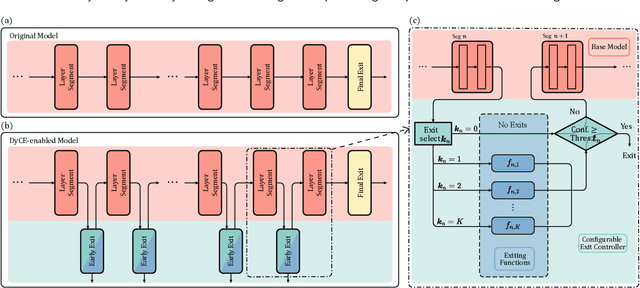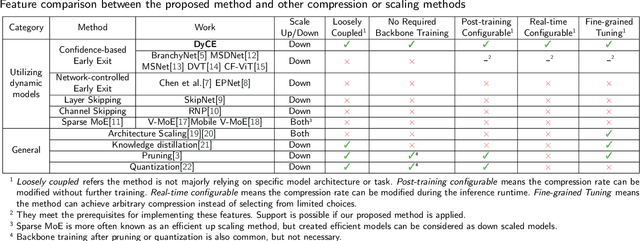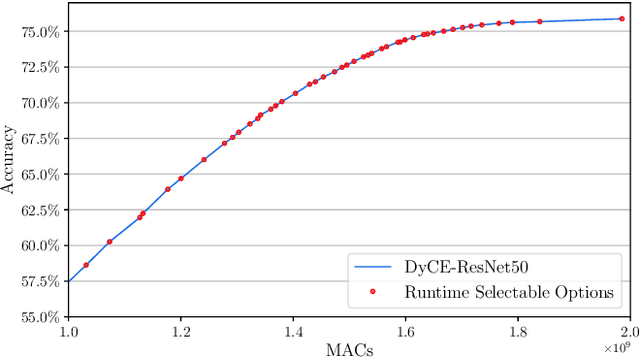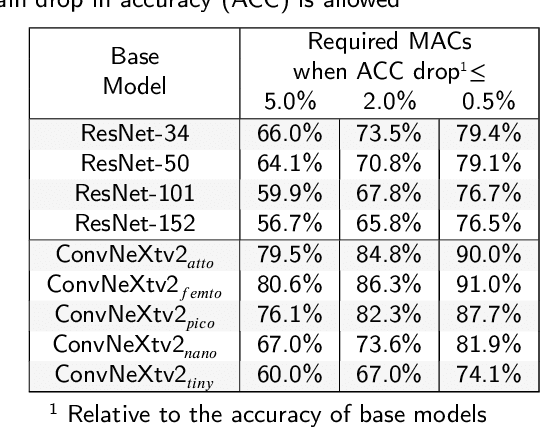Antoine Frappé
Tiny Models are the Computational Saver for Large Models
Mar 26, 2024Abstract:This paper introduces TinySaver, an early-exit-like dynamic model compression approach which employs tiny models to substitute large models adaptively. Distinct from traditional compression techniques, dynamic methods like TinySaver can leverage the difficulty differences to allow certain inputs to complete their inference processes early, thereby conserving computational resources. Most existing early exit designs are implemented by attaching additional network branches to the model's backbone. Our study, however, reveals that completely independent tiny models can replace a substantial portion of the larger models' job with minimal impact on performance. Employing them as the first exit can remarkably enhance computational efficiency. By searching and employing the most appropriate tiny model as the computational saver for a given large model, the proposed approaches work as a novel and generic method to model compression. This finding will help the research community in exploring new compression methods to address the escalating computational demands posed by rapidly evolving AI models. Our evaluation of this approach in ImageNet-1k classification demonstrates its potential to reduce the number of compute operations by up to 90%, with only negligible losses in performance, across various modern vision models. The code of this work will be available.
DyCE: Dynamic Configurable Exiting for Deep Learning Compression and Scaling
Mar 04, 2024



Abstract:Modern deep learning (DL) models necessitate the employment of scaling and compression techniques for effective deployment in resource-constrained environments. Most existing techniques, such as pruning and quantization are generally static. On the other hand, dynamic compression methods, such as early exits, reduce complexity by recognizing the difficulty of input samples and allocating computation as needed. Dynamic methods, despite their superior flexibility and potential for co-existing with static methods, pose significant challenges in terms of implementation due to any changes in dynamic parts will influence subsequent processes. Moreover, most current dynamic compression designs are monolithic and tightly integrated with base models, thereby complicating the adaptation to novel base models. This paper introduces DyCE, an dynamic configurable early-exit framework that decouples design considerations from each other and from the base model. Utilizing this framework, various types and positions of exits can be organized according to predefined configurations, which can be dynamically switched in real-time to accommodate evolving performance-complexity requirements. We also propose techniques for generating optimized configurations based on any desired trade-off between performance and computational complexity. This empowers future researchers to focus on the improvement of individual exits without latent compromise of overall system performance. The efficacy of this approach is demonstrated through image classification tasks with deep CNNs. DyCE significantly reduces the computational complexity by 23.5% of ResNet152 and 25.9% of ConvNextv2-tiny on ImageNet, with accuracy reductions of less than 0.5%. Furthermore, DyCE offers advantages over existing dynamic methods in terms of real-time configuration and fine-grained performance tuning.
 Add to Chrome
Add to Chrome Add to Firefox
Add to Firefox Add to Edge
Add to Edge